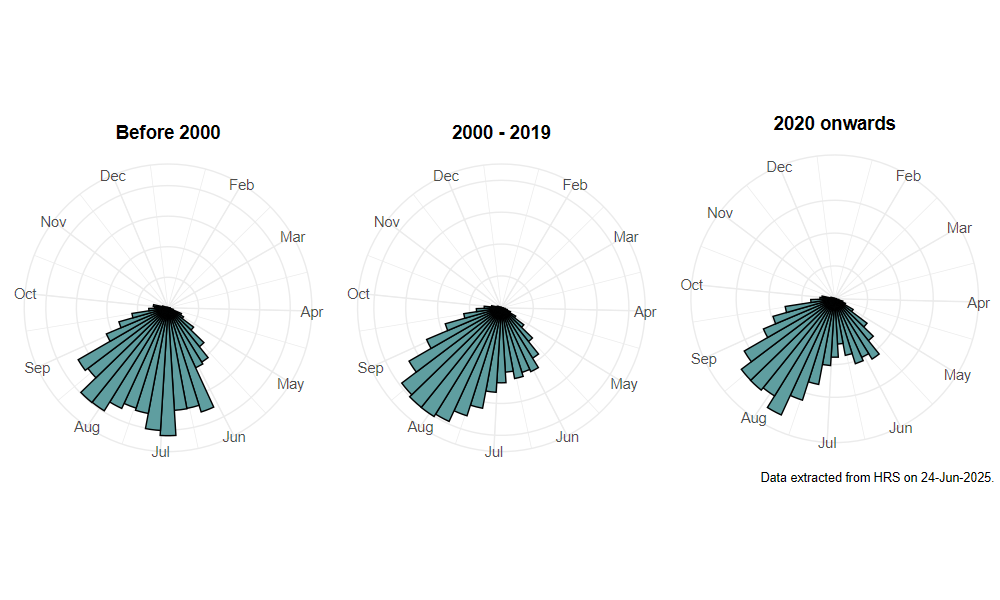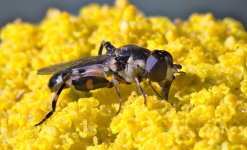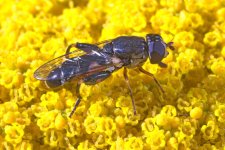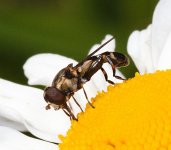Syritta pipiens (Linnaeus, 1758)
Identification
Identification difficulty = 1. ![]()
![]() according to Ball & Morris, 20241
according to Ball & Morris, 20241
Biology
The larva is found, often in large numbers, in wet decaying organic matter including compost heaps, manure heaps, cow dung and silage, but not in pools and ponds. A ubiquitous species in lowland areas including anthropogenic habitats such as farmland, parks and gardens. Usually found flying low down amongst the vegetation or visiting flowers. It is very prominent at the end of the season when large numbers visit ivy flowers. Males patrol around flowers, manoeuvring slowly and with great agility, and engage in confrontations, where two males hover head to head, with one hovering backwards as the other approaches. It is not clear how the contest is decided, but one suddenly darts away whilst the other resumes patrolling.
Flight period
The following plots show the number of unique records per week excluding those reported to be of immature stages.

Distribution
One of the most widespread and abundant hoverflies throughout Britain.

Trends
The following plots show the Frescalo TFactor vs year and a map of the rescaled frequency (all records) for the species.
-
Ball, S., & Morris, R. (2024). Hoverflies of Britain and Ireland. WILDGuides (3rd ed.). Oxford: Princeton University Press. ↩


